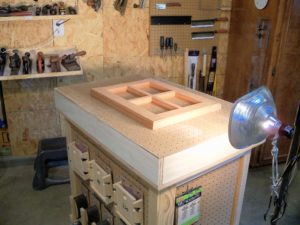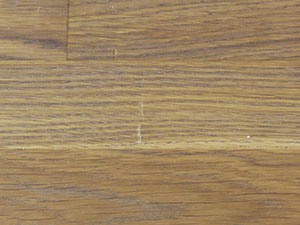Shedding Light on Defects
06 09 2021
For something that seems to be simple at first glance, sanding (and by extension sanding supplies), can be remarkably complex. Reading the 2Sand.com Blog has hopefully helped to guide you through selecting the proper abrasive, picking the best backer for the task, wet vs dry sanding, and effective hand sanding as well as opening your eyes to the advantages of custom-made sanding products. It occurs to us, however that we haven’t written much lighting, but lighting is another tool you can use to improve your finishing.

A well-lit work area is an absolute must. A lot of planning goes into placing fixtures to eliminate shadows, but this type of seamless illumination can actually hide flaws from visual inspection. No matter what sanding system you are using, the goal is to find and fix scratches and flaws before applying finish; however, it isn’t uncommon to have to go back and sand again when applying the finish coat exposes a missed flaw. Identifying the defects before applying the finish coat is always preferable – and this is where shadows can help. Harsh shadows can be exactly what you need for final inspection before finishing.

Focusing a strong light at a low angle across the surface of your workpiece is an amazing way to expose flaws. Like shining a flashlight across the floor to find a dropped screw, light shining along the surface of a part will cause even the smallest defects to cast visible shadows that cannot be seen in normal shop lighting, allowing you to correct them using your sanding disc of choice before finish is applied. Dings, dents, and flaws become obvious under the right lighting. In the image above, you can see a countertop under normal task lighting, and the same area with a light shining flat across the surface, exposing the flaws, can be seen in the image below.

Low angle inspection lights are fairly common in finishing rooms; traditionally, automotive headlamps are used to provide the strong light needed. LED lighting brings new features to inspection lights, allowing for dimming and altering colors as needed. Hand-held LED lights are lightweight and easy to guide along differing surface heights and curves to inspect irregularly shaped parts quickly and effectively.
Although 2Sand.com doesn’t sell inspection lights, we encourage you to experiment with them. Along with the myriad of other techniques we’ve shared with you over the years, lighting and the use of shadows to expose defects, can take your finishing results to the next level.
